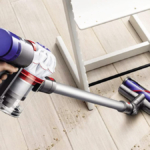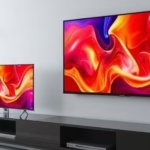How to Choose the Right Air Purifier for Indian Cities
The increasing air pollution levels in India have made air purifiers a necessity, especially in urban areas. From industrial emissions to vehicular exhaust, construction dust, and seasonal allergens, the air quality in Indian cities often drops to hazardous levels. Selecting the right air purifier isn’t just about buying a trendy gadget; it’s about safeguarding your family’s health in an environment where clean air has become a luxury. Here’s a comprehensive guide to help you navigate the world of air purifiers and make an informed decision.
Understanding the Air You Breathe
The first step in choosing an air purifier is understanding the specific challenges posed by your city’s air quality. For instance, Delhi often battles high PM2.5 levels during winter, while Mumbai faces a mix of coastal humidity and particulate matter from traffic. The Air Quality Index (AQI) of your city is a good indicator of what pollutants you need to tackle.
- Particulate Matter (PM2.5 and PM10): Tiny particles from dust, smoke, and industrial activity that can penetrate deep into the lungs.
- Gaseous Pollutants: Nitrogen dioxide, sulfur dioxide, and volatile organic compounds (VOCs) emitted from vehicles and factories.
- Allergens: Pollen and pet dander that can trigger asthma and allergies.
- Humidity and Mold: Coastal cities like Chennai and Mumbai often face mold problems due to high humidity.
Key Features to Look For in an Air Purifier
When shopping for an air purifier, you’ll encounter a range of features and jargon. Here’s what matters most for Indian conditions:
Filtration Technology
The heart of any air purifier is its filtration system. High-Efficiency Particulate Air (HEPA) filters are the gold standard. They can trap up to 99.97% of airborne particles as small as 0.3 microns, including PM2.5, dust, and allergens.
For Indian cities with significant vehicular pollution, consider purifiers with activated carbon filters, which can absorb harmful gases and odors. If mold and bacteria are concerns, models with UV-C sterilization or ionizers may provide added benefits.
Room Size and Coverage
Air purifiers are designed to work within specific room dimensions. Check the Clean Air Delivery Rate (CADR), which indicates how quickly the purifier can clean a room. For cities with severe pollution, opt for a model that offers higher CADR and covers slightly more than your room size for better efficiency.
Energy Efficiency
Air purifiers often need to run continuously in polluted areas, so choosing an energy-efficient model can save you from skyrocketing electricity bills. Look for models with energy-saving certifications or features like eco-mode.
Noise Levels
If you plan to use the purifier in your bedroom or workspace, noise can be a crucial factor. Many advanced models operate at whisper-quiet levels, ensuring that your air stays clean without disrupting your sleep or productivity.
Smart Features
Living in a tech-savvy era, many purifiers now come with smart features like app controls, air quality monitoring, and voice assistant compatibility. While not essential, these features add convenience and allow real-time tracking of your indoor air quality.
Special Considerations for Indian Cities
Different regions in India pose unique challenges for air purifiers. Here’s how to choose one tailored to your environment:
- Delhi NCR: With its infamous smog and high PM2.5 levels, focus on models with robust HEPA filters and high CADR ratings.
- Mumbai and Coastal Areas: Mold and odors are common issues. Opt for purifiers with dehumidifying capabilities and activated carbon filters.
- Kolkata: Humidity, industrial pollution, and allergens necessitate a combination of HEPA and activated carbon filtration.
- Bangalore and Pune: While these cities have comparatively better air quality, increasing vehicular emissions and construction dust require HEPA filters for efficient cleaning.
The Cost Factor
Air purifiers are available across a wide price range, but it’s essential to strike a balance between cost and functionality. Budget models under ₹10,000 might suffice for areas with moderate pollution, but for cities like Delhi, consider premium options with advanced filtration systems.
Maintenance: An Ongoing Commitment
Owning an air purifier isn’t a one-time investment. Filters need regular cleaning or replacement to maintain efficiency. Most HEPA filters last 6-12 months, while activated carbon filters might need replacement more frequently in heavily polluted areas. Check the availability and cost of replacement filters before purchasing.
Brands and Models to Explore
Popular brands like Dyson, Philips, Xiaomi, and Coway offer models specifically designed for Indian conditions. Research reviews and compare specifications to find a model that suits your needs.
Conclusion
Choosing the right air purifier for Indian cities is more than just a purchase; it’s an investment in health and well-being. By understanding your local air quality, prioritizing essential features, and considering long-term maintenance, you can find a purifier that meets your needs and ensures cleaner, healthier air for your family.
Don’t wait for the next smog-filled winter or allergy season—make the switch to cleaner indoor air today!
Would you like to explore top air purifier recommendations? Let us know in the comments below!




Leave a Reply
Want to join the discussion?Feel free to contribute!